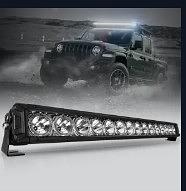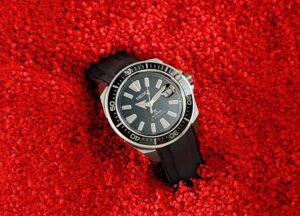Exterior vehicle lighting plays a crucial role in driving safety, vehicle visibility, and modern automotive design. Whether you’re cruising on a highway at night or navigating through foggy roads, proper lighting ensures that you see and are seen.
In this blog, we’ll explore the types of exterior vehicle lights, their importance, and maintenance tips to keep them functioning at their best.
Why Exterior Vehicle Lighting Matters
Proper lighting isn’t just about aesthetics; it’s a vital part of road safety. Headlights, taillights, and other exterior lights allow drivers to communicate with others on the road and ensure visibility in different conditions.
Lights serve three core purposes:
-
Illumination: Letting you see the road clearly in low-light or adverse conditions.
-
Signaling: Communicating your driving intentions to others.
-
Visibility: Making your vehicle noticeable to others, reducing accident risks.
Without efficient lighting, even the most advanced safety features can fall short.
Types of Exterior Vehicle Lighting
Let’s break down the common types of exterior vehicle lighting and their functions:
Headlights
Headlights are your primary visibility tool at night or in poor weather. Most vehicles today feature halogen, LED, or HID headlights. Some newer models include adaptive headlights that turn with the steering wheel, enhancing visibility on curves.
Taillights
Located at the rear, taillights light up when your headlights are on. They help other drivers see your vehicle from behind, especially in low-light conditions.
Brake Lights
Brake lights glow brighter than taillights and are activated when the brake pedal is pressed. This alerts drivers behind you that you’re slowing down or stopping.
Turn Signals
Also known as indicators, turn signals flash on either side of the vehicle to show your intention to turn or change lanes.
Daytime Running Lights (DRLs)
DRLs are designed to make your car more visible during daylight. They are automatically turned on when the vehicle is running.
Fog Lights
Mounted lower on the bumper, fog lights cut through fog, rain, or snow without reflecting back as much as headlights. They are typically used in extreme weather conditions.
Reverse Lights
These white lights are activated when the vehicle is put into reverse gear, warning pedestrians and other vehicles of your intention to back up.
Side Marker Lights
These small lights on the sides of the car help increase visibility from different angles, especially during night-time driving.
LED vs Halogen vs HID: Which is Better?
Today’s automotive market offers various lighting technologies:
-
Halogen Lights: Affordable and widely used, but less energy-efficient and shorter lifespan.
-
LED Lights: Energy-efficient, long-lasting, and brighter. They’re increasingly popular in modern vehicles.
-
HID (Xenon) Lights: Brighter than halogens, with a bluish tint, but can be costly and too intense for some drivers.
LEDs are the most efficient option for most drivers, balancing brightness, durability, and energy use.
Style Meets Functionality
Exterior vehicle lighting isn’t just functional it also adds style. Custom headlight designs, sequential turn signals, and LED strips have become popular trends in car modification.
Automakers use lighting design to set vehicles apart, adding to a vehicle’s personality and brand identity. Whether it’s the sharp DRL signature of an Audi or the iconic round headlights of a Jeep, lighting defines the character of a car.
Maintaining Your Vehicle’s Exterior Lights
A light that’s out is more than an inconvenience it can be dangerous and illegal. Here are a few maintenance tips:
-
Check lights regularly: Walk around your car and inspect all lights at least once a month.
-
Clean the lenses: Dirt and debris can dim your lights. Use a soft cloth and appropriate cleaner.
-
Replace bulbs promptly: If a bulb goes out, replace it with a compatible one as soon as possible.
-
Inspect for cracks or condensation: Water inside your lights can lead to electrical issues.
-
Consider upgrading: If your vehicle still uses halogen bulbs, switching to LED might improve visibility and reduce power consumption.
Legal Regulations and Safety Standards
Each country or state has specific laws concerning vehicle lighting. Some modifications like colored headlights or excessive brightness may not be road-legal.
Always ensure:
-
Your lights are DOT-approved (in the U.S.).
-
You don’t install excessively bright or colored lights that can distract others.
-
All lights are functioning before going on long drives or road trips.
Exterior vehicle lighting is far more than just a cosmetic feature. It’s a vital part of vehicle safety, communication, and visibility. Whether you’re upgrading your lights for better performance or ensuring compliance with road laws, maintaining proper lighting is a smart investment in your safety and driving experience.
Take a few minutes each month to inspect your vehicle’s lights and drive confidently, knowing you can see and be seen.
- Exterior Vehicle Lighting: Safety, Types & Maintenance
- Exterior vehicle lighting improves road safety, visibility, and style. Learn its types, functions, and maintenance tips.
- Exterior Vehicle Lighting
Related posts:
 Top Carrier Oil Suppliers in India for Bulk & Wholesale Buyers
Top Carrier Oil Suppliers in India for Bulk & Wholesale Buyers
 Atlas Pro ONTV : La Révolution de la Télévision par Internet
Atlas Pro ONTV : La Révolution de la Télévision par Internet
 Make Your Message Stick: The Power of Flyers & Posters in Plano!
Make Your Message Stick: The Power of Flyers & Posters in Plano!
 Aqua Gym Equipment Used in Holistic Wellness and Mind-Body Programs
Aqua Gym Equipment Used in Holistic Wellness and Mind-Body Programs
 Transparency and Trust Through Beverage Packaging Supports Anti-Counterfeiting Measures
Transparency and Trust Through Beverage Packaging Supports Anti-Counterfeiting Measures
 Key Time Management Strategies for Small Business Owners and Freelancers in 2025
Key Time Management Strategies for Small Business Owners and Freelancers in 2025
 Sell My House Fast Miramar Florida – Close in as Little as 7 Days
Sell My House Fast Miramar Florida – Close in as Little as 7 Days
 Law Notes PDF Download: A Smart Resource for Law Students and Aspirants
Law Notes PDF Download: A Smart Resource for Law Students and Aspirants







